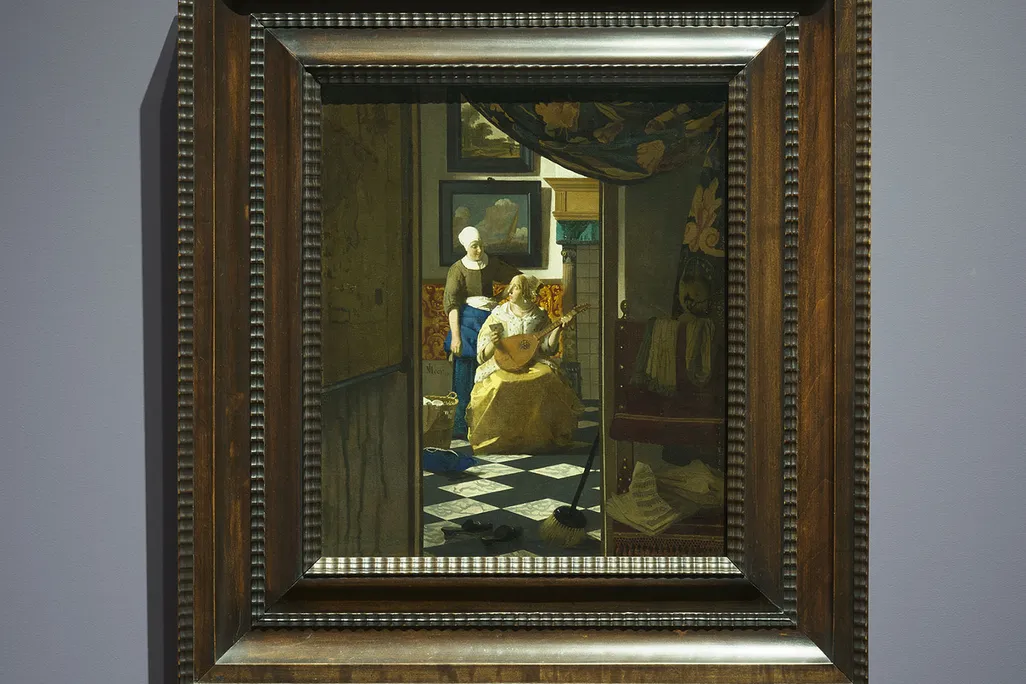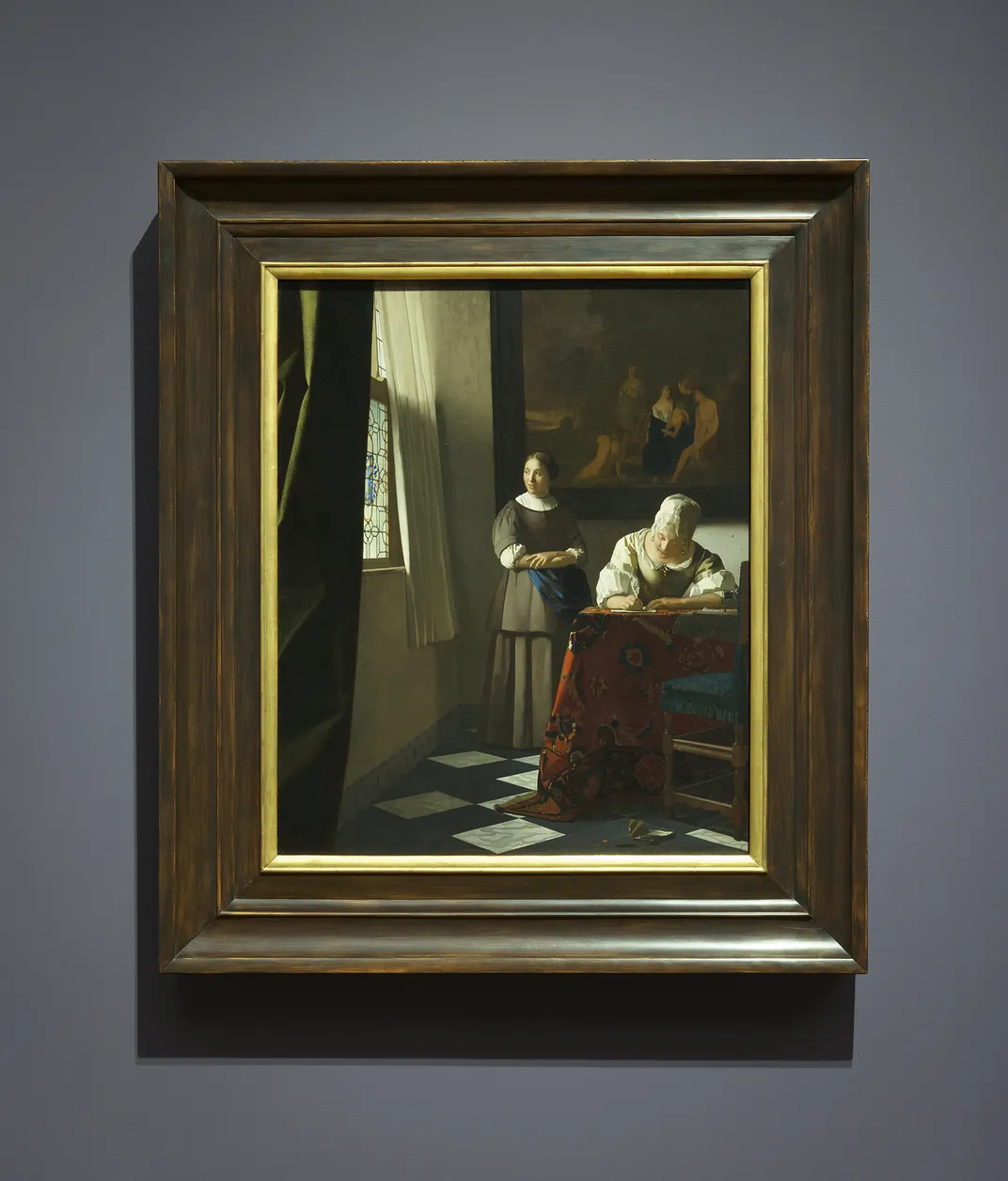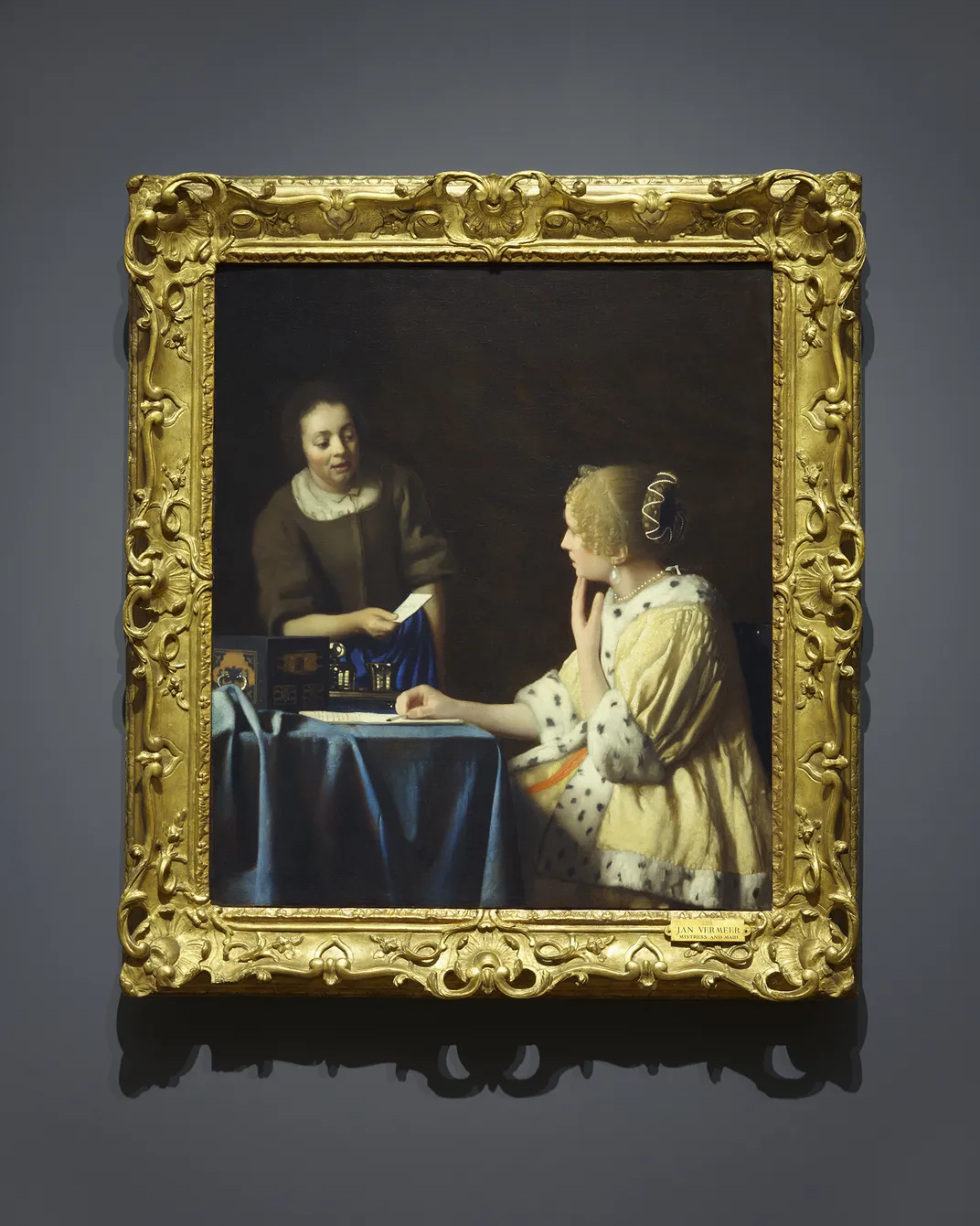See Three Breathtaking Vermeer Paintings That Capture the Lost Art of Letter Writing
A trio of the 17th-century Dutch painter’s works featuring women writing and receiving letters is on display at the recently reopened Frick Collection

In its first special exhibition since its reopening, New York’s Frick Collection brings together three Johannes Vermeer paintings for “Vermeer’s Love Letters,” a new exhibition on view through August 31.
The 17th-century Dutch painter, who was only somewhat successful in his lifetime, has since become internationally renowned for his delicate domestic scenes. The trio of paintings at the Frick are linked by one domestic activity in particular: Each one features a woman writing, or receiving, a letter.
The Love Letter (circa 1669-70), the smallest painting on display, places the viewer outside of a doorway, which frames a woman in an elegant yellow dress, a big pearl earring (or, as scholars have suggested, more likely a glass imitation of pearl) and a fur-trimmed jacket holding a stringed instrument called a cittern. Her maid, who stands beside her with a slight smile, appears to have interrupted her strumming to deliver a letter. Measuring 17 by 15 inches, the painting comes to the Frick from Amsterdam’s Rijksmuseum.
Quick fact: What is Vermeer most famous for?
The Dutch painter’s best-known work is Girl With a Pearl Earring (circa 1665), which is held by the Mauritshuis museum in the Hague.Also on loan is Woman Writing a Letter With Her Maid (circa 1670-72), which comes from the National Gallery of Ireland in Dublin. An ornately dressed woman sits at a table beside an olive green curtain, composing a letter with great attention. Her lady’s maid appears at her side, but instead of locking eyes, the two women seem to “occupy different worlds,” art critic Jerry Saltz writes in New York magazine. The maid gazes out of a decorated window, lost in a daydream as white light shines in. Evidence of what could be an earlier draft litters the floor: a crumpled notebook, a red wax seal. Behind the women, a painting depicting baby Moses being taken from the Nile looms large. “The details sing,” writes Saltz. “You could spend hours in this painting.”

The third painting, which comes from the Frick’s collection, brings the viewer arrestingly close to the scene at hand. Mistress and Maid (circa 1664-67) also features a woman dressed in yellow, this time composing a missive of her own. Again, her activity seems to have been interrupted by her maid, who is handing her another note. Behind them is a curtain that was once green but that has darkened over time. As such, the painting’s “highly expressive, almost life-size figures seem to exist in a shallow, stage-like space,” art critic Mary Tompkins Lewis writes in the Wall Street Journal.
“Vermeer’s Love Letters” is the first special exhibition to hang in the Frick since it reopened in April following a five-year, $220 million renovation. Once the decadent mansion of Henry Clay Frick, a Gilded Age industrialist who made his fortune in steel production, the museum now features famed paintings by the likes of El Greco, Rembrandt, Anthony van Dyck and Francisco Goya.
Vermeer’s Mistress and Maid is the final work Frick acquired before his death, says the museum’s deputy director Xavier F. Salomon in a statement, making this exhibition “a particularly appropriate tribute to his legacy as a collector.”

To bring the special exhibition together, the Frick brought on guest curator Robert Fucci, a scholar of Dutch art from the University of Amsterdam. Fucci wrote an accompanying catalog in which he explores letter-writing customs during Vermeer’s life, per the New York Times art critic Deborah Solomon. In it, Fucci argues that the three paintings’ letters can be seen in the context of courtship. He cites from Ovid’s Ars Amatoria (The Art of Love), which says that “love letters were an essential component to seduction, the way to begin an affair and sustain it.”
“Vermeer’s Love Letters” marks the first time that these three paintings have been displayed together in a single gallery. Just a few blocks away from the Frick is the Metropolitan Museum of Art, where five more of the Dutch painter’s works hang, creating “an extraordinary occasion for Vermeer enthusiasts in New York City,” per the statement.
The letter-writing trio of paintings were all on display at the Rijksmuseum in 2023, when the largest-ever collection of Vermeer’s work went on display. That show featured 28 of the artist’s 37 known paintings, a famously small oeuvre. (That already-modest corpus shrank by one in 2022, when the National Gallery of Art concluded that Girl With a Flute was painted by Vermeer’s associates, not the painter himself.)
To this day, scholars have many questions about Vermeer’s life and art. Those mysteries are difficult to solve given that he faded into obscurity after his death. Many years later, 19th-century art historians rediscovered him.
What scholars do know is that France’s invasion of the Netherlands in 1672 wreaked havoc on the country’s art market—and on Vermeer’s livelihood. “Suddenly unable to sell his own paintings, saddled with those of other artists that he had on consignment, and burdened with a gaggle of children, he fell apart,” writes the Financial Times’ Ariella Budick. He died at age 43 on December 15, 1675.
To make ends meet, his widow, Catharina Bolnes, traded her husband’s art collection, including his own paintings, for food. She gave The Love Letter to a local baker to settle a bill, according to the Wall Street Journal. Per the Financial Times, Catharina hoped to recover it, but never did.
Still, the painting survived the war. Hundreds of years later, it hangs, once again, beside Vermeer’s other creations.
“Vermeer’s Love Letters” is on view at the Frick Collection in New York City through August 31.